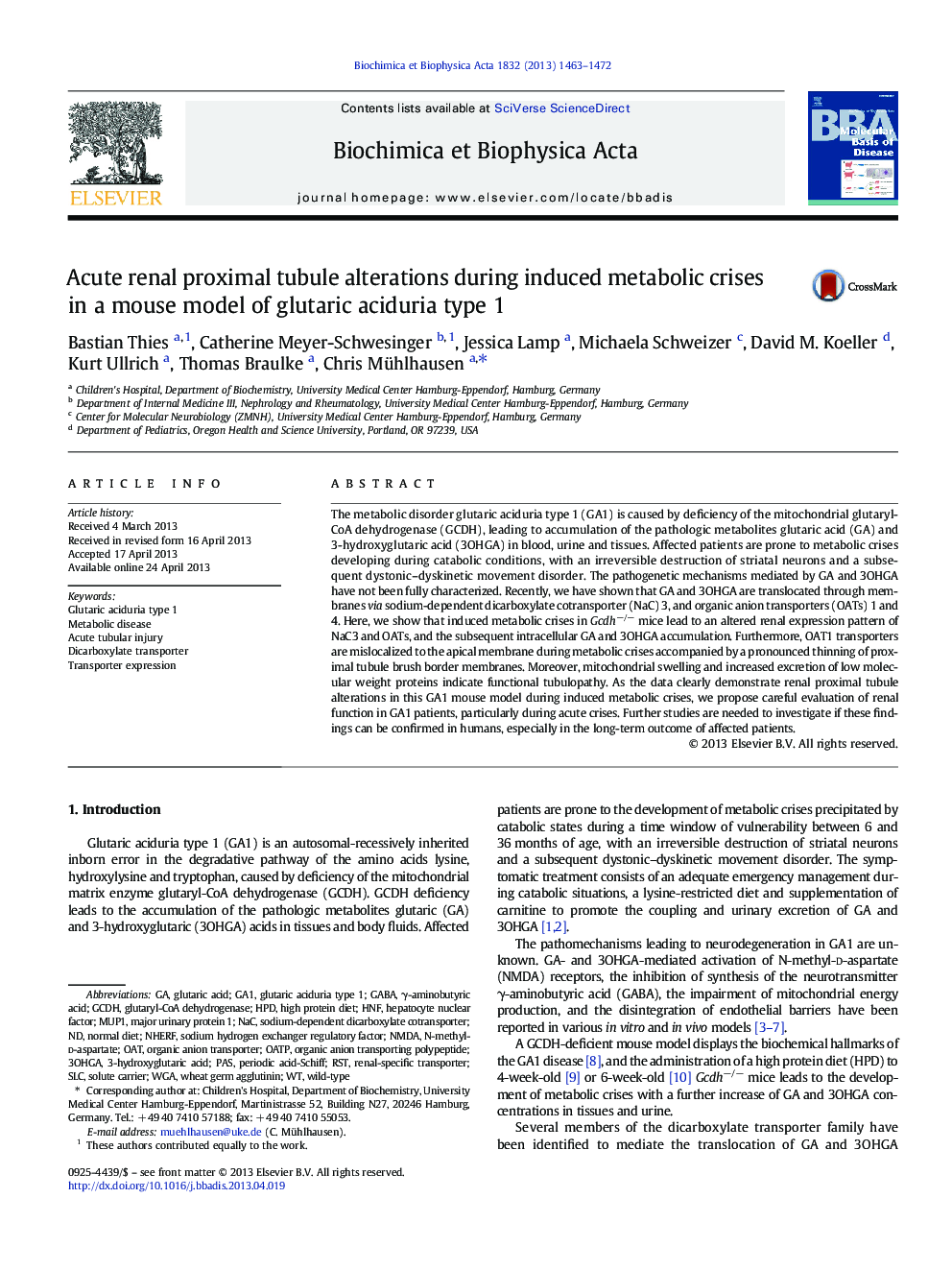| Article ID | Journal | Published Year | Pages | File Type |
|---|---|---|---|---|
| 1904780 | Biochimica et Biophysica Acta (BBA) - Molecular Basis of Disease | 2013 | 10 Pages |
•Altered kidney expression of OATs during induced crises in Gcdh−/− mice•OAT1 mislocalizes to proximal tubule apical brush border membranes during crises.•Metabolic crises lead to pronounced proximal tubular brush border membrane thinning.•Gcdh−/− mitochondria of renal proximal tubule cells are swollen and electron lucent.•Gcdh−/− mice during crises show low molecular weight proteinuria and tubulopathy.
The metabolic disorder glutaric aciduria type 1 (GA1) is caused by deficiency of the mitochondrial glutaryl-CoA dehydrogenase (GCDH), leading to accumulation of the pathologic metabolites glutaric acid (GA) and 3-hydroxyglutaric acid (3OHGA) in blood, urine and tissues. Affected patients are prone to metabolic crises developing during catabolic conditions, with an irreversible destruction of striatal neurons and a subsequent dystonic–dyskinetic movement disorder. The pathogenetic mechanisms mediated by GA and 3OHGA have not been fully characterized. Recently, we have shown that GA and 3OHGA are translocated through membranes via sodium-dependent dicarboxylate cotransporter (NaC) 3, and organic anion transporters (OATs) 1 and 4. Here, we show that induced metabolic crises in Gcdh−/− mice lead to an altered renal expression pattern of NaC3 and OATs, and the subsequent intracellular GA and 3OHGA accumulation. Furthermore, OAT1 transporters are mislocalized to the apical membrane during metabolic crises accompanied by a pronounced thinning of proximal tubule brush border membranes. Moreover, mitochondrial swelling and increased excretion of low molecular weight proteins indicate functional tubulopathy. As the data clearly demonstrate renal proximal tubule alterations in this GA1 mouse model during induced metabolic crises, we propose careful evaluation of renal function in GA1 patients, particularly during acute crises. Further studies are needed to investigate if these findings can be confirmed in humans, especially in the long-term outcome of affected patients.
